Young, Fast, and Insta-Famous: Why Tinman Elite Thinks They’re The Next Great Pro Running Team
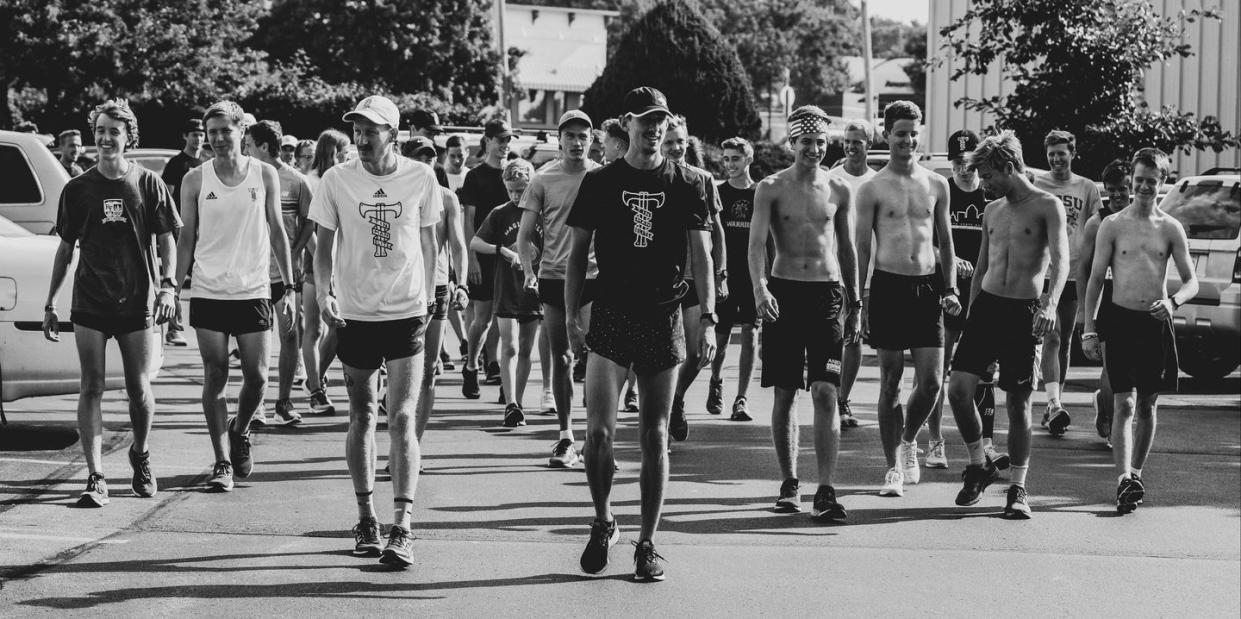
It's the end of June, and on the dirt paths around Boulder Reservoir, happiness wafts from the surface like heat rising from a Texas highway. But only in one place. The glee follows the wake of five young men, all rail-thin, shirtless, and laughing.
They joke and josh throughout their two-mile warmup and subsequent five-mile run around the reservoir. During a set of hill sprints, 22-year-old Drew Hunter heckles Sam Parsons, 25, over his camel-like drinking habits. “What’s your hydration plan for the day?” he asks. “Eat a Nuun tablet?” Sam laughs and responds, “One Nuun tab a day, baby. That’s all you need.”
Before their final sprint, a middle-aged man in a run vest and knee-high socks jogs up from the opposite direction. He’s built more like a CrossFitter than a runner. Compared to the younger men, he’s plodding. Sam shoots the slower athlete an ivory-toothed grin. I’m standing a few yards away, capturing the runners on my iPhone. Mid-lope, Sam yells over, “Don’t get him in the shot! He’ll make us look bad!” The man beams.
Perhaps that’s because he knows he just got a shout-out from some of the fastest professional runners in the United States. The sweaty pack is part of Tinman Elite, a three-year-old team that’s currently 12 runners strong. The athletes, all men in their twenties, excel in distances from 800 meters to the marathon. Tinman has lofty goals—they want to be one of the top elite running teams, with members competing at the 2020 Olympic Games in Tokyo. But beyond the drive for accolades and medals, there’s a second, equally important ambition: to make elite running more transparent, relatable, and fun.
Drew is Tinman’s unofficial captain. Nicknamed “the LeBron James of competitive running” by his teammates, he has a mild surfer vibe that belies his intense focus. As a high school sophomore in Purcellville, Virginia, he won the 2014 Penn Relays Carnival high school 3,000-meter race in 8:16.31. The following year he won the New Balance Nationals Indoor two-mile national title in 8:48.22; he also broke the high school boys’ national indoor 3K record with a 7:59.33, and became the eighth high school athlete ever to break four minutes in the mile—which he did twice before setting a new national high school indoor mile record, twice, with a best of 3:57.81.
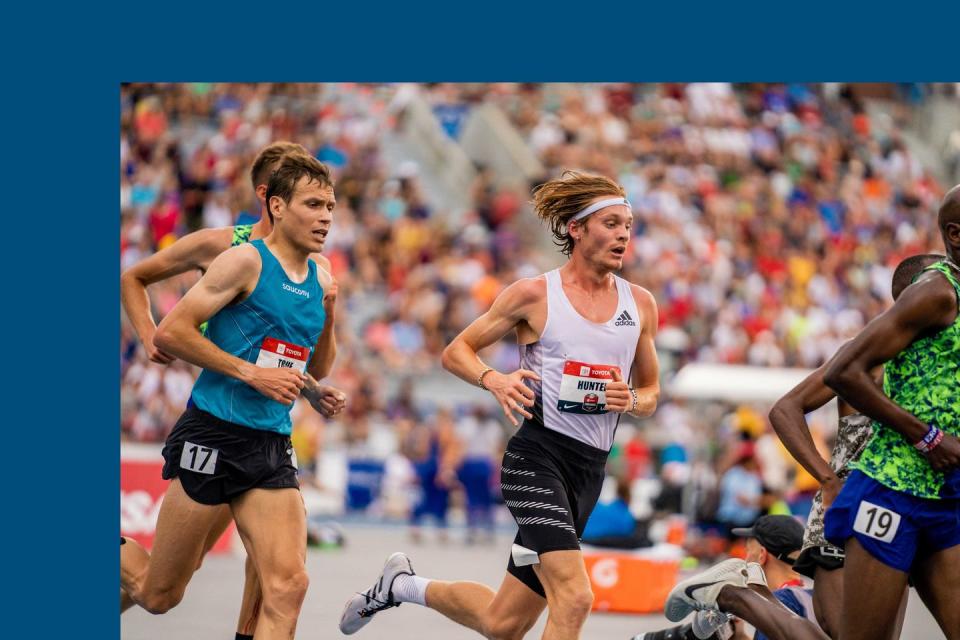
The big running colleges came calling. So did Adidas, who offered the then-18-year-old a lucrative 10-year contract, plus funds to attend the college of his choice. Drew signed before the ink on his diploma had dried, even though the deal came with a catch: Adidas lacked (and still lacks) a fully sponsored elite team.
Drew took a year to explore various running towns before settling on Boulder. He fell in love with the outdoor-focused city in the foothills of the Rocky Mountains. It’s a college town that’s perfect for running, with superb weather (300 days of sunshine a year), the ideal altitude (5,328 feet, with access to 8,000-foot roads within a half-hour drive), culture (both laid-back and sports-obsessed), and endless, gorgeous dirt to run on.
Drew enlisted Tom Schwartz—the coach who helped him achieve his high school records—to continue to train him remotely from Boise, Idaho. At first, Drew ran with Morgan Pearson, a Boulder-based athlete who was also training with Schwartz. Later that spring Drew and Morgan hooked up with Reed Fischer, an All-American in the 10,000 meters. Drew and Reed had met once before, briefly, at a high school race. “[Back in high school] I knew Drew because he was Drew,” says Reed. At the race, Reed introduced himself, and the two chatted for about two minutes. “That’s the only face-to-face interaction we had before I moved in with him two years later.”
Before reconnecting with Drew, the lanky redhead checked out several other elite groups, including the Roots Running Project, a Boulder-based team coached by Richard Hansen. But the team’s philosophy and program didn’t gel with who Reed was as an athlete. “They are a great team with the success to prove it, but it wasn’t the right fit for me. They’d do hard workouts five times a week and their overall volume was…a lot.” They also focused on hitting paces and analytics (data-driven workouts focused on soft splits). “That’s just not how I prefer to train. I’m someone who likes to be well-rounded and not really sweat the small stuff.”
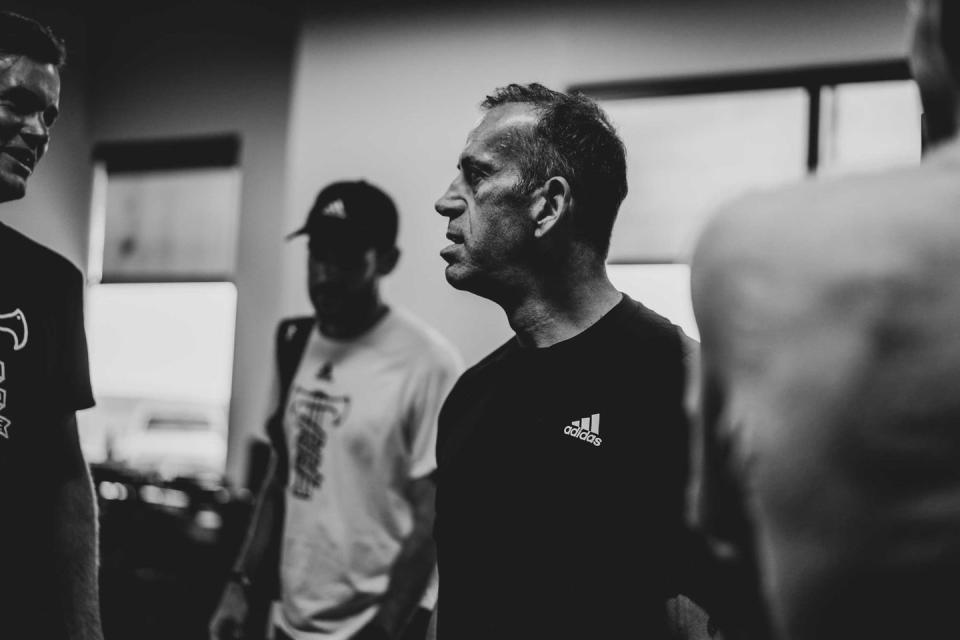
In Schwartz, Reed found a coach who played to his strengths: consistency and slow and steady improvement. In Drew, he gained a like-minded running partner, one who wanted to win but who also ran for the sheer joy of running.
By October 2017, three more runners, including Sam, had joined the group. They lived together, trained together, and started calling themselves Tinman Elite, after Schwartz’s self-ascribed nickname (a nod to his roots—he was born in Menomonie, Wisconsin, where the local triathlon was called the Tinman). That December they entered their first meet—the USATF Club Cross Country Championships. Morgan Sharpied “TINMEN” on XL white T-shirts, saying, “We need something to wear when we win.” They took the overall title.
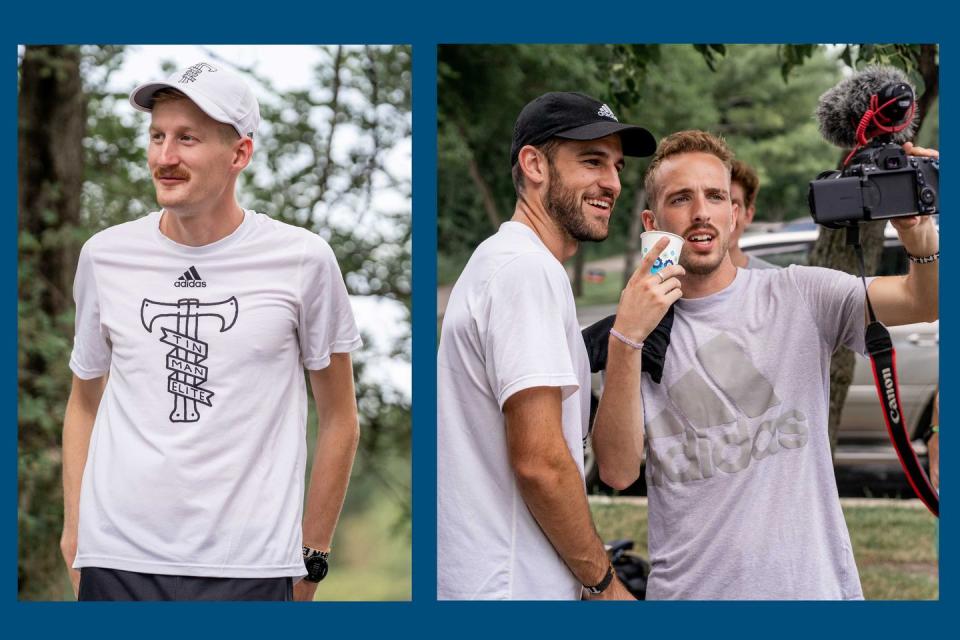
In the two years since, the running world has been scratching its collective head over Tinman Elite’s identity and their growing successes (to name a few: club cross-country champions in 2017, 2018, and 2019; having all but one current Tinman qualify for USA Track and Field Nationals in 2019). “We’ve been called ragtag, a mob, the Beastie Boys of running. Some people don’t understand how we’ve done what we’ve done in such a short time span,” says Sam, raking his fingers through the shaggy blond hair he pulls back with a headband for races. But the Tinmen? They know exactly who they are and what they’re trying to do. Sam explains, “It’s about happiness. It’s about our coach. And it’s about us being raw and authentic, so people can connect to running.”
On a steamy day in July 2019, Tom Schwartz slumps on a leather couch at the Des Moines Hilton, his head flopped back, his eyes closed. Schwartz isn’t sleeping, he’s exhausted. He just moved to Boulder, he’s taking his final exams for a Ph.D. in health and human performance, and he’s here, at the USA Track & Field Outdoor Championships, coaching the Tinmen.
Schwartz trains the Tinman Elite team using a philosophy that grew from his own experience. As a high school and collegiate cross-country runner, he found his team's training philosophy— “hard, all the time”— left him physically and emotionally spent. But in the summers when he only took comfortable hourlong runs, some over hilly terrain, he could run faster during weekend races. “I started to realize that if workouts and races are appropriately spaced and sequenced, and you resist working too hard, you can have more success than when you’re working hard all the time,” says the now-52-year old Schwartz.
Schwartz’s training focuses on what he calls critical velocity (CV), a hard but not-too-hard pace that improves the aerobic capacity of the fast-twitch muscle fibers responsible for endurance and sustainable intermediate speed. “Technically, CV is about 90 percent of VO2 max; but for the average runner, think of it as a few seconds per mile faster than your 10K race intensity,” says Schwartz, “or an effort that’s sustainable for 30 to 35 minutes.” His method blends CV workouts with long, slow runs, hill repetitions, threshold training, and small amounts of VO2 max training, all in an effort to keep his runners’ bodies and minds fresh. “You don’t get in shape as fast [as when you’re training hard all the time], but the key benefit is that you don’t beat yourself up physically and emotionally.” And that, he says, leads to better overall long-term performance.
Joan Hunter, Drew’s mother and a former master’s racer with national titles in the 400 and 800, first read about CV training in posts Schwartz wrote on LetsRun.com more than 10 years ago. She adopted his methods, and later hired him to coach her. She felt stronger and faster, so she decided to try Schwartz’s training on the high school runners she and her husband Marc coached—including Drew. Mixing CV 1,000-meter repetitions, at 8K to 10K race pace, along with long, slow, easy runs and short, fast repetitions, improved the athletes’ stamina, says Joan. Drew says it gave him more punch at the end of races. Before his senior year of high school, Joan and Marc decided that he should work directly with Schwartz, and that year he broke the four-minute mile indoors. Schwartz’s coaching “was the cherry on top of three great years of training and growth I had with my dad and mom,” says Drew. “He would say, ‘Try this. Push a little bit farther. Instead of running a 3:59 mile, let’s run a 3:57 and break the high school record. He knew the workouts I needed to do to run those times.”
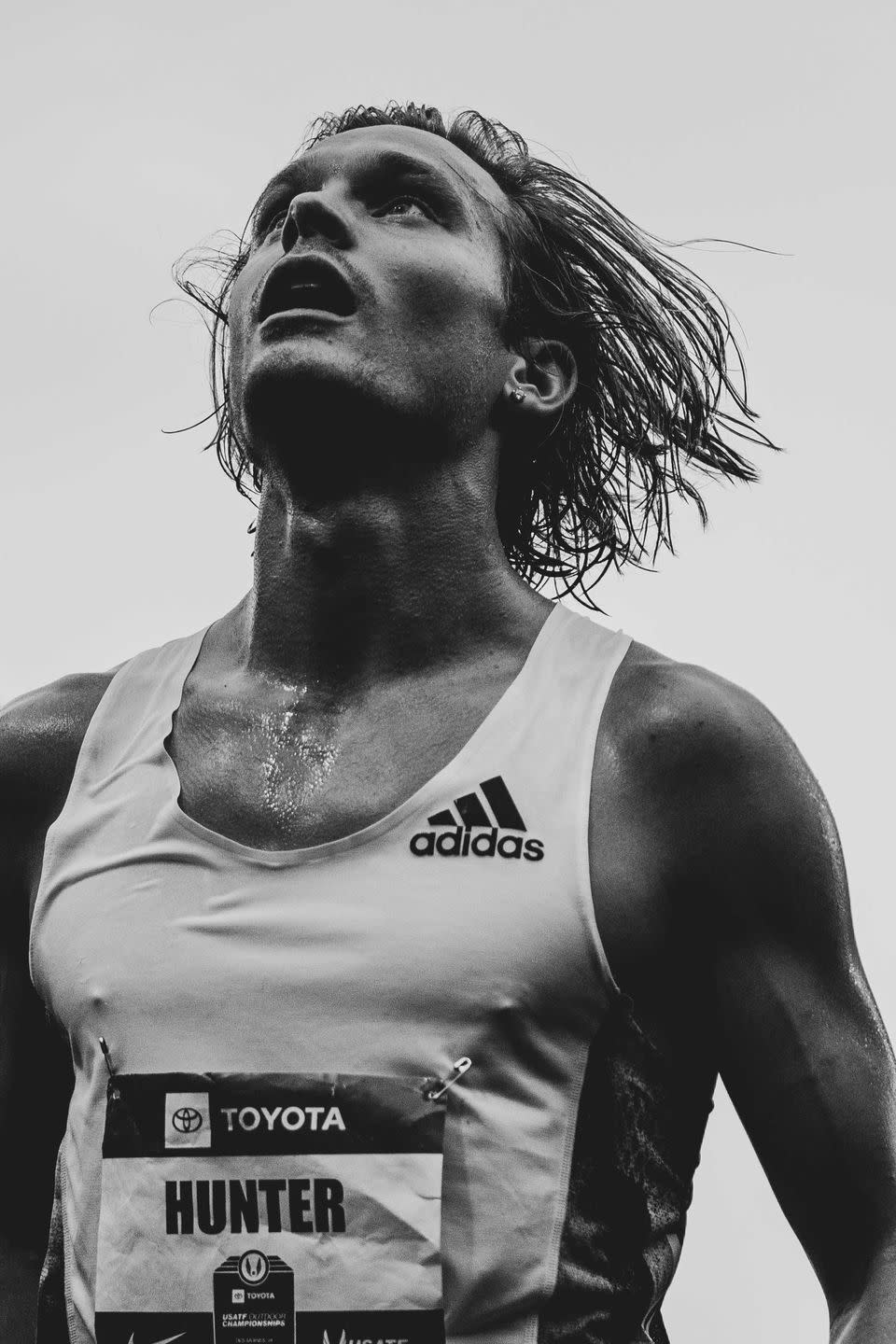
When the Tinmen joined Drew in Boulder, they joined Schwartz, too. Most of the guys came to the team with a chip on their shoulder, says Reed. They were broken down. Beat up. Or they’d been overlooked in college. The majority wanted a second chance in running, and they found it in the tight-knit team, and with Schwartz’s training.
“Coach Schwartz’s focus is different than other elite coaches, who are so hyper-focused on how to squeeze every little fraction of a second out of their athlete with maybe not enough regard for that athlete’s well-being,” says Reed. “He has a more macro approach—he wants us to have as good of a career as we can for as long as we can rather than having as good of a day as we can.”
Tinman Elite training is different for each athlete, based on the distance he runs. But the overall approach is a mix of CV training, long runs, easy runs, hill work, and tempo runs. Under Schwartz’s coaching, every runner has experienced quantifiable success. Every single member (minus recruits too new to have raced yet) has PR’d. And every runner has found support, belonging, a family of like-minded runners, and a training method that makes him wake up in the morning with a sense of excitement, which fuels a belief about his future. “We’re getting there, we’re going to be on the world stage,” says Drew. “In four years, it’s not even going to be a question. We’re going to be one of the best groups in the world.”
Running has never been like baseball, football, or basketball—outside of Prefontaine or Carl Lewis or maybe Meb, it’s hard to feel like you really know its heroes. (Blame reasons ranging from a lack of media to extreme secrecy on elite teams.) Most of the Tinman Elite runners remember what it was like to be a kid who loved running above all else but couldn’t always see a way forward.
Take Reed, who grew up watching two-time Olympic medalist Galen Rupp. “He’s probably one of the greatest runners of all time, but I can’t tell you anything about him but his name and PRs,” because the top runners train in secret, come out only to race, and then retreat back to their hidden lairs, he says. “I should have idolized him, but he’s so sterile. I just didn’t really care.”
That’s why the Tinmen prioritize connecting personally with their fans, most of whom are those high school or college-age kids. The team frequently hosts community runs for the so-called Tinmob in Boulder and while racing at locales across the country. At one recent run in Des Moines, 50 nervous-looking kids mooned over their running idols before one plucked up the courage to ask Reed, “If I changed my name to Reed Fischer and ran a 45-minute 5K, would you be mad?” he asks.
“I’m sure there are already other Reed Fischers out there doing it, so I’d just be, ‘more power to you,’” laughed the Tinman.
Another kid shouts from the pack, “Talk us through your [most recent] 10K!” And hamming it up, Reed does.
Then he hands it over to steeplechaser Joey Berriatua, who walks the kids through one of his races. Each of the five Tinmen at the event do this; the Q&A lasts a good 50 minutes. The connection is real, says a collegiate runner from Indianola, Iowa, who came to see them. “I was kind of wary of [these guys], because you see people on Instagram and they may not be like they portray in real life. But everything on Instagram is exactly what they’re like. I love their message of having fun with running.”
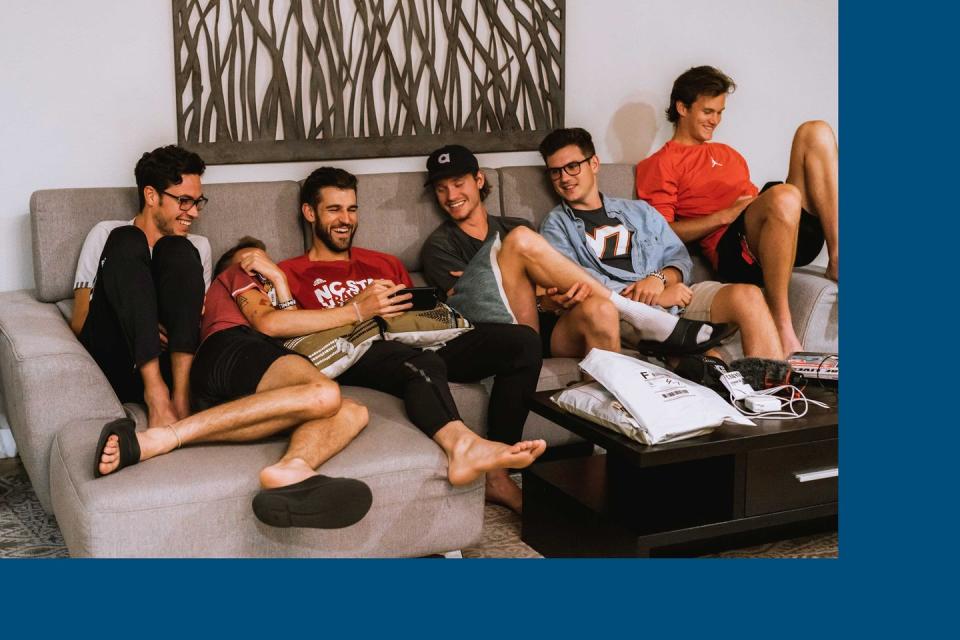
“We want to show these kids that this sport can be fun, even at the professional level, that we’re the same as a 13- or 14-year-old at a conference meet in the middle-of-nowhere Minnesota or Virginia,” says Sam. And Instagram—and social media in general (Tinman Elite has 100,000-plus followers across Instagram, Facebook, Twitter, and YouTube)—is where the team takes accessibility to the extreme. They post pictures and videos of every possible aspect of their lives, from racing to grocery shopping. They also sell merchandise on the website: hats, backpacks, shorts, and shirts bearing the back-to-back axes that form the Tinman Elite logo. On the surface, this hyper-focus on branding, social media, and “merch” can feel cringeworthy. But look deeper and it’s clear that their efforts are less about selling stuff than about connecting to and inspiring young runners.
It’s important to the Tinmen that their fans know more about them than their PRs. They want them to see their struggles and challenges, not just their successes. One way they do this is through a series of relentlessly intimate online essays called “Tin Talks.” In one of Sam’s, he writes what it was like to come off a bunch of races where he’d PR’d only to finish nearly last at a 5K in Belgium. “After the race I was pretty deflated. I remember seeing Sean McGorty on my cooldown and giving him a bro-hug after he’d just run a huge PR of 13:18 (aka the &%$!* time I was supposed to run). I knew my season was over.”
This emphasis on openness is backed by Schwartz: “Being a Tinman, in my view, is all about supporting other people. When we bring people onto our team, we want them to care about others. It means we have a positive voice on our team, and when someone is struggling, we pick them up. There are a lot of teams out there that don’t seem to emphasize this as much. But our philosophy is about more than just running. It’s about a way of thinking about life. A way of treating others. A way of overcoming obstacles.”
At the Outdoor Championships in Des Moines, the Tinman Elite runners are nervous, and with good reason. This is the most important American meet of the year and the biggest competition of their running lives to date. It determines the qualifiers for the World Championships in Doha, Qatar, in September.
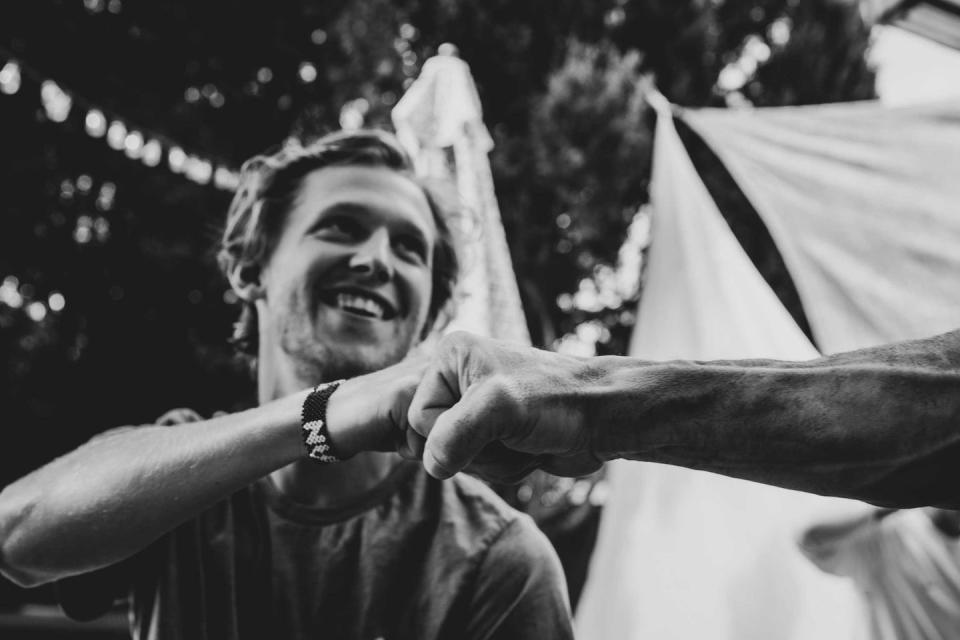
Sam and another Tinman Elite runner, Jordan Gusman, run for Germany and Australia, respectively. Both have already qualified for the World Championships. The rest of the team are here to do the same, and so far results are mixed. Patrick Joseph misses qualifying for the 800 finals by just one place. Steeplechasers Kyle Medina and Joey Berriatua also don’t qualify, finishing 10th in their respective heats. Connor Winter finishes 6th in the 10K final, and Reed nabs 8th in the same race. But it’s the last night of finals that brings the biggest test for the team. Drew, Connor, and Jeff Thies are set to race the 5K final.
Storm clouds build overhead as the 21 racers step to their waterfall-start positions on the track. Flanking Hunter are four heavy-hitter Nike runners, Lopez Lomong, Paul Chelimo, Woody Kincaid, and Hassan Mead. They blast out of the gate, and by the first corner, Chelimo, Kincaid, and Lomong have built a several-yard lead. They’re running incredibly strong; in the stands, Joan Hunter wonders what the hell they’re doing. “That’s too fast,” she says.
Drew is getting squeezed into the pack behind them—which could result in disaster, because of the way qualifying for the World Championships works. Drew already met the World Championships qualifying time for the 5K at the Payton Jordan Invitational. But he has to finish this race in the top three among all qualifiers with the World standard, including those who might hit the time tonight, to get to Doha. Chelimo and Mead have also already run the qualifying time, but Lomong and Kincaid haven’t. Now, it looks like they could edge out Drew for the key spots.

Drew hangs on, despite a handicap no one can see–a plantar injury he sustained in June. When the injury first happened, he dialed back, doing most of his training in the pool. But he’d raced so well at the Oslo Diamond League meet (running the fastest 3K by an American at the event) that, after the race and still with an injured foot, he started training “ridiculously hard,” he says, “like, 90 miles a week.” He was still in pain when he arrived in Des Moines. But he told himself: I can get this if I just stay present. “I was healthy enough to race but I had no idea how my foot would come out on the other end.”
At 2,500 meters, the lead pack begins to slow. Drew begins to close the gap between himself and the four leaders. In the bleachers, the Tinmen watch nervously. Joan goes quiet.
Then, at about 1,000 meters out, Drew guns it. He’s closed in on the lead pack. Top-three contention is within reach. But at 150 meters to go, his stride makes a sharp change. With one push off the ground, he hops. “I honestly could not push off my foot,” he says. With his plantar torn, he finishes fifth. Miraculously, since only Lomong and Kincaid hit the qualifying time, Drew still makes the team for Worlds.
At the end of the race he can barely walk. Jeff and Joan help him limp to the stands, where he hugs his teammates and poses for pictures with kids. Several minutes later, he exits the stadium, planning to heal up and go to Worlds.
But that’s not what happens. In the weeks after Des Moines, the plantar tear, plus two metatarsal fractures, refuse to heal. After much heartache and deliberation, he realizes he can’t race in Doha. In hindsight, he knows where he went wrong. “I didn’t let my foot heal completely [after Oslo]. And I was way too attached to time on a clock and time in my workouts.”
What Drew did in the lead-up to the USATF Championships isn’t unusual for an athlete of his caliber. “When you get on a roll with an injury, you have no choice but to train at a high level because you have this huge goal, and you choose not to back off like you otherwise would,” says Schwartz. But he agrees that he and Drew made mistakes with training and race preparation (including not getting the necessary maintenance in the spring for tight back and hip muscles that increased shock to his feet). Chalk it up to the coach not insisting on more therapy, and inexperience on the athlete’s part, says Schwartz.
Tinman is still young, and its members are still learning to read the signs of serious injury. “Drew needs more experience in terms of listening to his body and his coach, and staying on top of treatments for biomechanical issues, which are part of being a pro,” says Schwartz.
They’re lessons that all the Tinman can learn and that they, in turn, can teach their fans as they train for the upcoming Olympic trials and beyond. As Drew tweeted to his 9,000-plus followers: “Heart wanted to run but the body wasn’t ready. Thank you everyone. I’ll get this right for 2020.”
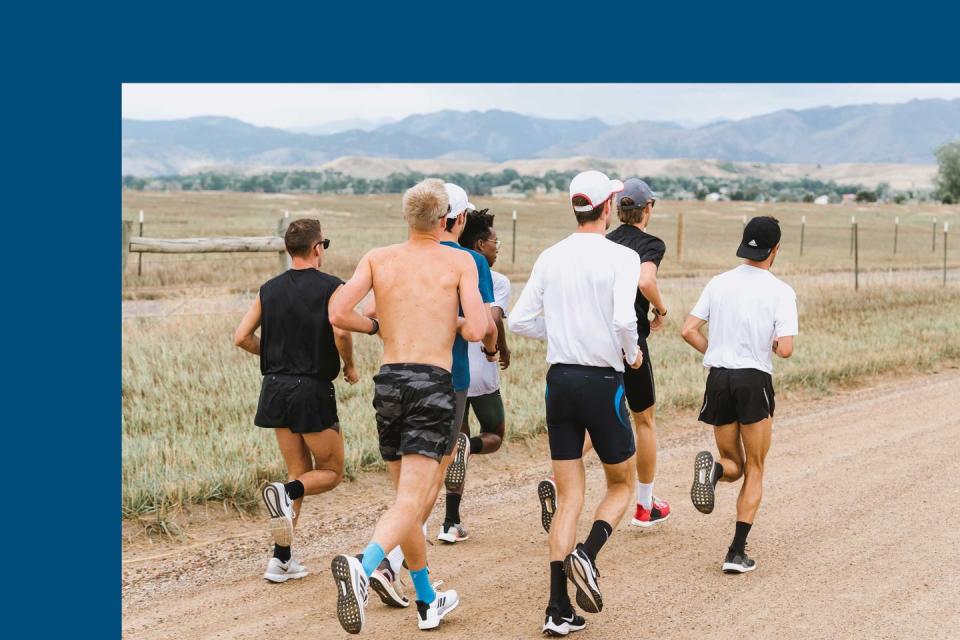
Want to try CV training? Schwartz recommends this interval workout geared toward a recreational runner with a 22:00 5K time. (For a faster or slower pace, use the calculator on his website, runfastcoach.com.) Add it once a week to your regular training plan.
15–20 minute warmup at an easy pace
5 x 1km at Critical Velocity (CV = 4:30/km, which is 7:14.52/mile pace), jog 200m recoveries
5 x 200m cutdowns starting at 5K race effort and ending at 800m race effort (jog 100m recoveries)
10–20 minute slow cool-down running
You Might Also Like

